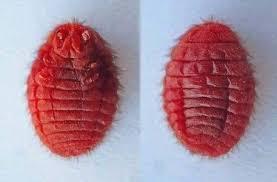this is the bug used for red candies.
- ИЗБРАННОЕ
- ИССЛЕДОВАТЬ
- Страницы
- Группы
- Мероприятия
- Статьи пользователей
- Rewards
Категории
- Sustainability
- Главная
- Wellness
- Theater
- Sports
- Shopping
- Religion
- Party
- Другое
- Networking
- Music
- Literature
- Art
- Health
- Gardening
- Игры
- Food
- Fitness
- Film
- Drinks
- Dance
- Crafts
- Causes
Больше
Great Indian Bustard
The great Indian bustard (Ardeotis nigriceps) or Indian bustard is a bustard occurring on the...
How to Manage Stress in a Fast-Paced World
Managing stress in a fast-paced world is crucial for maintaining both mental and physical...
Mind of steel
Okay, a few paragraphs are enough for an obligatory intro, right? Of course it is, nobody reads...
#hiduisiam
Hinduism is over 4,000 years old, making it one of the world's oldest religions. It is made...
×
Your daily access limit has been reached. Please try again tomorrow.
© 2025 GoSharpener Pvt.Ltd.
Refund and Cancellation policy - We do not entertain any refunds and cancellation Russian
Refund and Cancellation policy - We do not entertain any refunds and cancellation Russian


Allergic reactions
Some people may experience allergic reactions to cochineal extract, including hives, itchy skin, rhinitis, diarrhea, and anaphylaxis.
Labeling
In the US, the FDA requires that cochineal extract be identified by name on food labels.
Pasteurization
The FDA also requires that cochineal extract be pasteurized to destroy any salmonella.
Vegetarian
Cochineal is not suitable for vegetarians because it's made from insects.
Cochineal extract is derived from the female cochineal, a type of insect that lives on prickly pear cacti. The insects are sun-dried, crushed, and treated with an acidic alcohol solution to produce carminic acid, which is then used to make cochineal extract.
Cochineal extract is used in many foods and drinks, as well as in cosmetics and pill coatings.